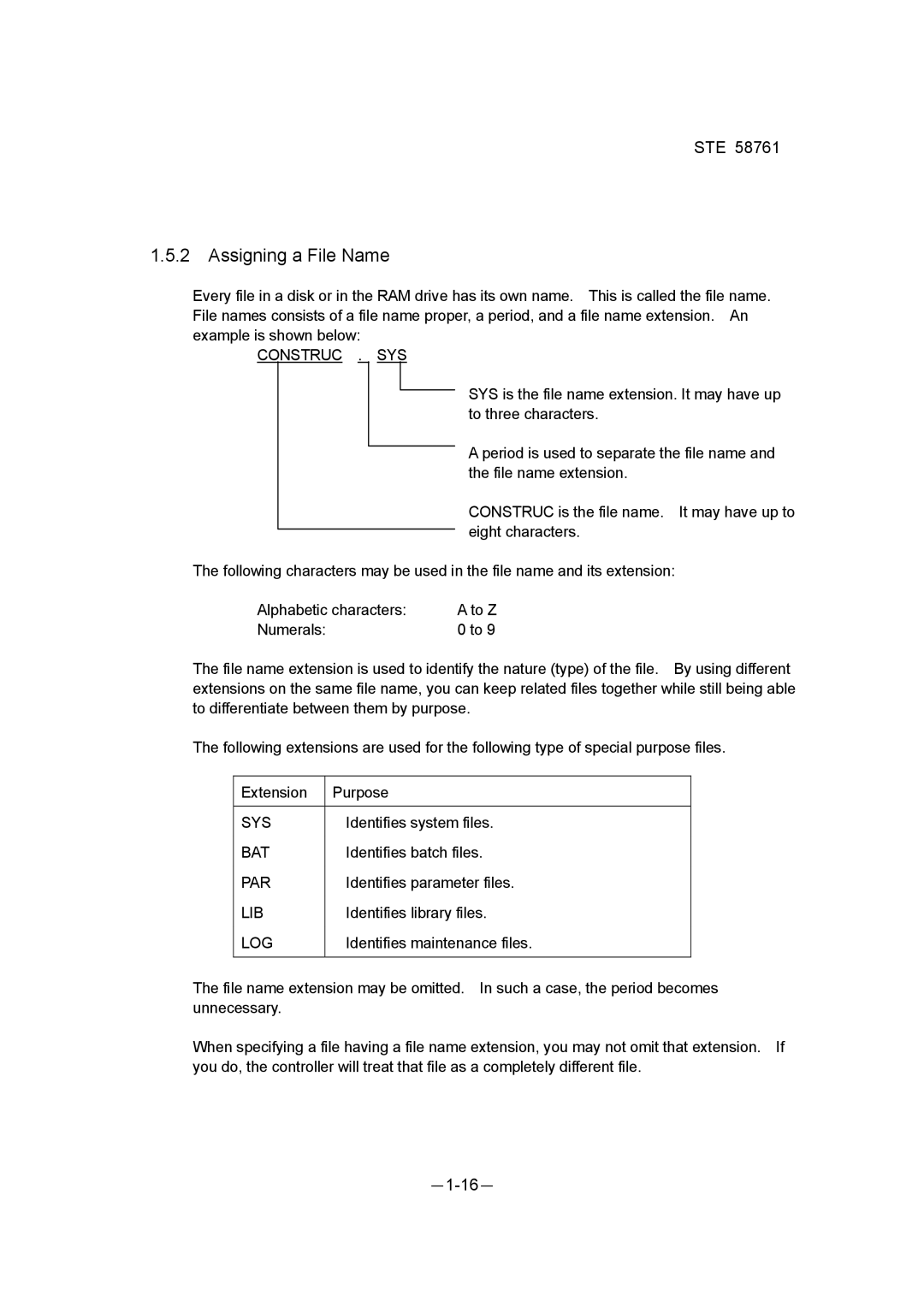
STE 58761
1.5.2Assigning a File Name
Every file in a disk or in the RAM drive has its own name. This is called the file name. File names consists of a file name proper, a period, and a file name extension. An example is shown below:
CONSTRUC . SYS
SYS is the file name extension. It may have up to three characters.
A period is used to separate the file name and the file name extension.
CONSTRUC is the file name. It may have up to eight characters.
The following characters may be used in the file name and its extension:
Alphabetic characters: | A to Z |
Numerals: | 0 to 9 |
The file name extension is used to identify the nature (type) of the file. By using different extensions on the same file name, you can keep related files together while still being able to differentiate between them by purpose.
The following extensions are used for the following type of special purpose files.
Extension | Purpose |
|
|
SYS | Identifies system files. |
BAT | Identifies batch files. |
PAR | Identifies parameter files. |
LIB | Identifies library files. |
LOG | Identifies maintenance files. |
|
|
The file name extension may be omitted. In such a case, the period becomes unnecessary.
When specifying a file having a file name extension, you may not omit that extension. If you do, the controller will treat that file as a completely different file.
